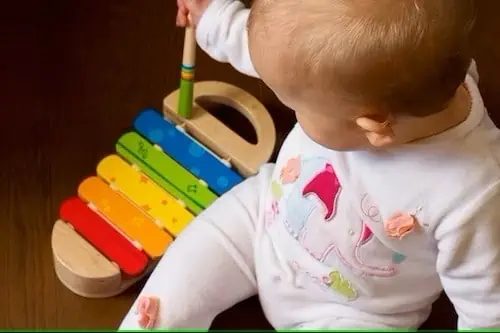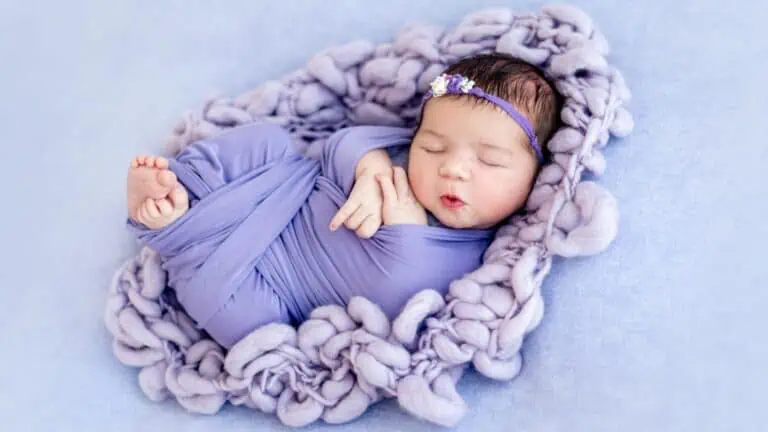All About Irish Twins: Risks and Tips for New Moms
This post may contain affiliate links. As an Amazon Associate, I earn from qualifying purchases.
Imagine finding out you are pregnant while you still have an infant nursing and in diapers. That’s the scenario parents of Irish twins face.
What are Irish twins? What’s the history and biology behind this phenomenon? Most importantly, what impact does it have on newborns and their families?
You might have many questions if you find out you’re expecting — again — without a breather after your last birth. Here’s all you need to know about Irish twins, including the risks new parents face and tips to help you cope.
What Are Irish Twins?
In the simplest terms, Irish twins refer to two infants from the same mother born less than 12 months apart. While some women plan to have their children born close in age, very few arrange for them to come at this rapid-fire rate.
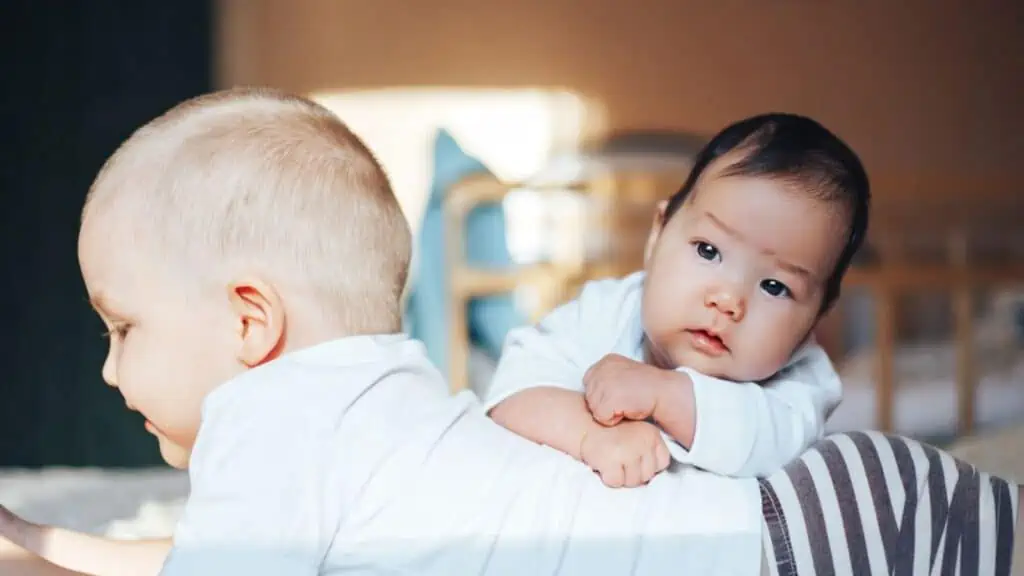
There are biological, psychological, financial, and practical reasons why having two babies within 12 months can cause problems. There are a few advantages, although many parents find they don’t outweigh the risks. Let’s explore.
Why Parents Give Birth to Irish Twins
The reasons some parents give birth to Irish twins vary today. A few choose to get pregnant and have childbirth within a short period so they can resume their normal lifestyles. For example, female athletes may not want to take multiple breaks from a contact sport like boxing — if they want more than one child, Irish twins could appeal to them.
Many Irish twins happen as an “oops.” Scores of women mistakenly believe that breastfeeding eliminates the need for birth control while they recover from labor and delivery. Although it is rare to become pregnant during this time because of the effect on your hormone levels, it’s not impossible. You should stick with your normal birth control method to prevent pregnancy.

Where Did the Term “Irish Twins” Come From?
The term “Irish twins” originated from Irish catholic immigrant families who came from this predominantly Catholic nation. Ireland only recently made abortion a constitutional right — before then, the country’s long religious history forbade the practice.
Catholics also frown on birth control, and many early Irish immigrants continued practicing the same religion they followed in the old country. The term became a slur, as such individuals often lived in cramped, crowded quarters and suffered considerable stigma from outsiders, much like immigrants from some other nations endure today.
Is the Term “Irish Twins” Offensive?
Although the term Irish twins has lost much of its negative connotation today, it’s still wise to exercise sensitivity. The term was originally intended to insult the Irish immigrant population, implying they were uneducated and lacked self-control. Therefore, you should be mindful when using it among those of Irish heritage and probably avoid saying it at all.
Context is king when determining if a given term is meant to be offensive. For example, some people use “Irish twins” as a mere descriptor for babies born as much as 18 months apart. Learning about and recognizing the derogatory roots is still critical, as is gently educating others who might be unaware.
Are Irish Twins Rare?
Irish twins aren’t as rare as you may think. While many health professionals advise waiting 18 to 24 months before conceiving again, many of these children have normal lives, hitting developmental milestones at roughly the same ages as their firstborn peers.
Modern life may increase the number of Irish twins. As more adults postpone having children for financial reasons, those wanting larger families later may opt to have several closer together before the childbearing-age window closes.
Risks of Having Irish Twins
Medical experts aren’t the only ones who hesitate to recommend trying for Irish twins. Mother Nature also frowns on the idea, as these pregnancies carry higher health risks for your developing baby. It’s also tougher on you as a parent. Here are the physical reasons to think twice before having two children close in age.
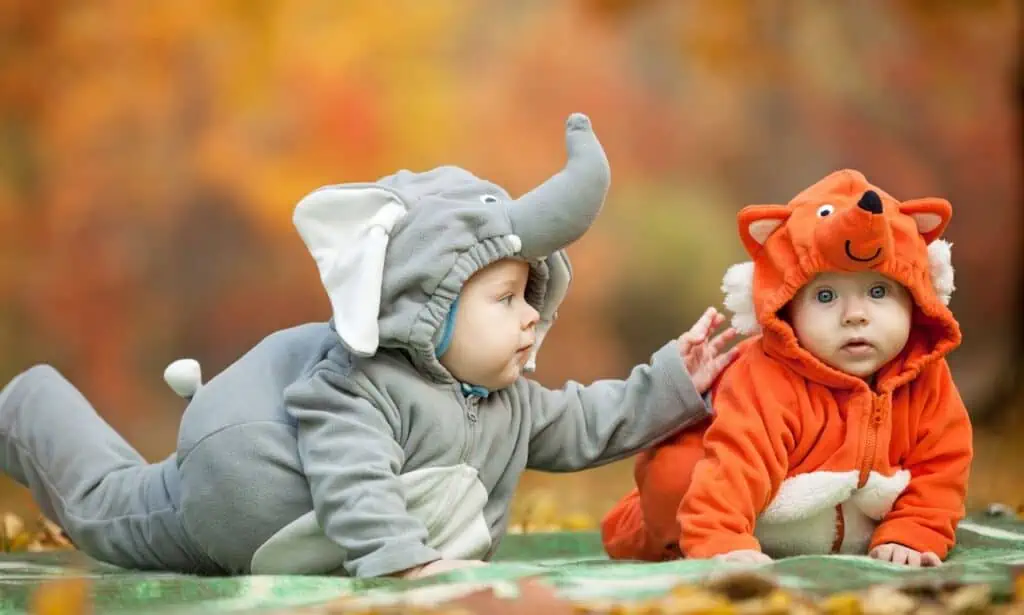
1. Greater Infant Mortality Risk
Researchers have found a clear link between a short period between births and a higher infant mortality risk, especially in developing countries. According to their research, periods less than 36 months significantly increase death rates.
However, these differences disappear among women higher on the socioeconomic ladder. This finding implies that the improved health care available to elite women in wealthy nations mitigates this risk of having Irish twins. Thus, if you have the means and plan your family this way, you’ll probably be OK.
2. Low Birth Weight
Another risk of Irish twins is delivering a child with low birth weight. Your current baby already taps your body’s resources, as breastfeeding mothers need additional calories and nutrition to support nursing. Adding a pregnancy to the mix further depletes these reserves.
Women who don’t plan for Irish twins may go on extreme diets to regain their pre-baby weight. Doing so when they don’t know they’re pregnant again can deprive the developing fetus of vital nutrients during a crucial developmental stage. For example, you need extra folate during early pregnancy to prevent neural tube defects.
Furthermore, these women may hop back into their old exercise routine, especially if they kept it up at a modified level during their first pregnancy. While movement benefits most pregnant women, there are some activities you should avoid, such as contact sports or those that require you to lie on your back for extended periods.
3. Premature Delivery
Having Irish twins increases your risk of a premature delivery, which also poses dangers to your infant. Babies born prematurely run a higher chance of complications at birth and long-term health problems.
For example, premature infants are more likely to experience the following:
- Sleep apnea
- Underdeveloped lungs
- Bleeding in the brain
- Inflamed intestines
- Blood infections
- Abnormal blood flow to the heart
- Underdeveloped blood vessels in the eyes
Long-term complications of premature birth include:
- Cerebral palsy
- Hearing and vision problems
- Learning disabilities
- Poor growth
4. Breast Milk Scarcity
Your first baby may struggle to get enough to eat if you get pregnant again while nursing. Although it is possible to breastfeed while pregnant, the hormones reduce your milk supply. You can complement their meals with formula, but many physicians recommend breastfeeding because of the health benefits it provides to your infant.

You may boost your milk supply by increasing your consumption of certain foods and herbs. However, not all of them are safe to use during pregnancy. For example, many women eat fenugreek to boost lactation, but utilizing this herb early in pregnancy can cause miscarriage or congenital disabilities.
5. Risks to the Mother
Mom also bears health risks from Irish twins. Pregnancy is a medical condition (technically- even though a woman isn’t “sick”), and, like surgery, it can result in inflammation and infections that your body needs time to recover from before risking another baby. Failure to give it adequate rest can cause your tissues to rupture prematurely.
Additionally, your vaginal microbiome needs time to rebalance itself after delivery. This term refers to the colonies of beneficial bacteria that line many body membranes. Without it, you’re more prone to infection — and conditions like bacterial vaginosis can increase your chances of premature birth.
Mothers also face significant mental health risks from Irish twins, including:
- Anxiety
- Postpartum depression
- Post-traumatic stress disorder
- Trouble bonding with their infants
Other Risks of Irish Twins
The risks of Irish twins aren’t all medical. Think about it: Having a baby changes every aspect of your life. Having two babies in rapid-fire succession compounds the ordinary lifestyle adjustments you must make after giving birth.
1. Inadequate Financial Resources to Care for Two Infants
Perhaps the biggest burden parents of raising Irish twins face is financial. It’s expensive to have a child, especially in the U.S., and costly to raise one until age 18 or beyond. Given today’s economic climate, many kids stay with their parents well after adulthood.

Combine that with (in the US):
- No state-provided health care
- No state-provided childcare
- No state-mandated parental leave
- No state-mandated sick leave — when either the parent or child falls ill
You need a considerable income to cover the costs of raising Irish twins, especially if you’re on one income.
The expense of raising two children close in age isn’t the only complicating factor affecting your finances — it’s also their close developmental stages. Your children are likely to both need child care, upping that cost. Many parents find daycare expenses factor into their decision whether to work, but for single moms, raising two infants while working could prove a Herculean task.
Furthermore, big expenses will continue simultaneously throughout your children’s life spans. They’re likely to want their first car and need money for college simultaneously — will your paycheck cover it? Of course, it’s possible (people have twins all the time), but takes some planning.
2. Inadequate Human Resources to Deal With Two Infants, Especially for New Parents
Raising one infant is tough, and parenting Irish twins requires enormous strength, fortitude, and patience. The burden could be too much for many, especially among young parents still learning the ropes.
Once again, single parents are disproportionately affected (and they may be single due to the hardships of parenthood with a partner). While partnered folks can take turns performing various childcare tasks, those without a mate have it harder. The load could prove too much, especially given the financial reality of raising two children close in age. The recent pandemic showed how women struggled the most, thanks to childcare responsibilities, and most of the programs enacted during that time to ease the pain have since disappeared.
3. Irish Twins and Changing Legislation
Women in the United States face a unique problem. Although the nation has tremendous resources available, many low-income women live in conditions resembling developing countries, thanks to vast income inequality. Additionally, the nation’s for-profit healthcare system leaves many without access to meaningful medical treatment.
Poor financial health leaves many low-income women without adequate nutritional and housing resources to care for two infants born too close together. Disparities in education also influence a woman’s knowledge about available birth control resources and whether she uses them.
A lack of health insurance coverage also limits a woman’s birth control options. Although the FDA recently approved OTC birth control pills, they aren’t available everywhere and will likely hit shelves last in impoverished areas where the need is greatest.
Unfortunately, low-income women are most likely to feel the impact of recent legislation restricting their pregnancy options. They may lack coverage to obtain birth control and may find themselves forced to give birth despite health risks. Whatever their intent, anti-abortion laws will result in poorer health outcomes and increased generational poverty. Women who give birth to Irish twins experience twice the burden.
Tips for Parenting Irish Twins
What can you do if you are preparing for Irish twins to ease the burden? Here are six tips for this unique parenting experience to help it go more smoothly.
1. Call in the Troops
You’ll need all the help you can get. Now is the time to call in assistance from your family and friends. Be realistic, not demanding, but feel out how much aid others can realistically provide. However, it’s vital to have aid lined up and delegate responsibilities so you can take time for self-care.

You should also line up resources. Here are some that can help as you navigate this new landscape:
- Healthcare.gov: Having a baby qualifies as a life event that lets you change your coverage options if you don’t have care. Even if you don’t qualify for financial assistance, you apply for the Children’s Health Insurance Program (CHIP) through the same portal. Most states expand Medicaid coverage to protect new mothers for a specified period after giving birth.
- 211: This helpline is your portal to the United Way and local programs that can offer housing assistance, help paying your bills and referrals to mental health services.
- WIC: This program provides supplements for food and health care referrals for pregnant women and children up to age 5.
- La Leche League: This group offers breastfeeding support and resources.
- FindHelp.org: This online portal offers connections to financial assistance, food pantries, and other free and low-cost help.
2. Get on a Schedule
One baby wakes up to feed. You get them settled, nestle back into bed — and 20 minutes later, the second one cries.
Working out a schedule that suits both infants will take some time, but it’s crucial to your sanity. Furthermore, staying organized saves time, a commodity you’ll have in short enough supply.
You can also hire a sleep consultant if you need extra assistance.
3. Pass on Comparisons and Competition
It’s tempting to compare your children, but doing so can inspire unhealthy competition between them — and the older one will always have the edge. One of your most critical jobs as a parent is to instill a sense of agency in your kids, the core belief that their actions can affect change in their world. Making them feel helpless, as if they’ll never be as good as their sibling, defeats this purpose.
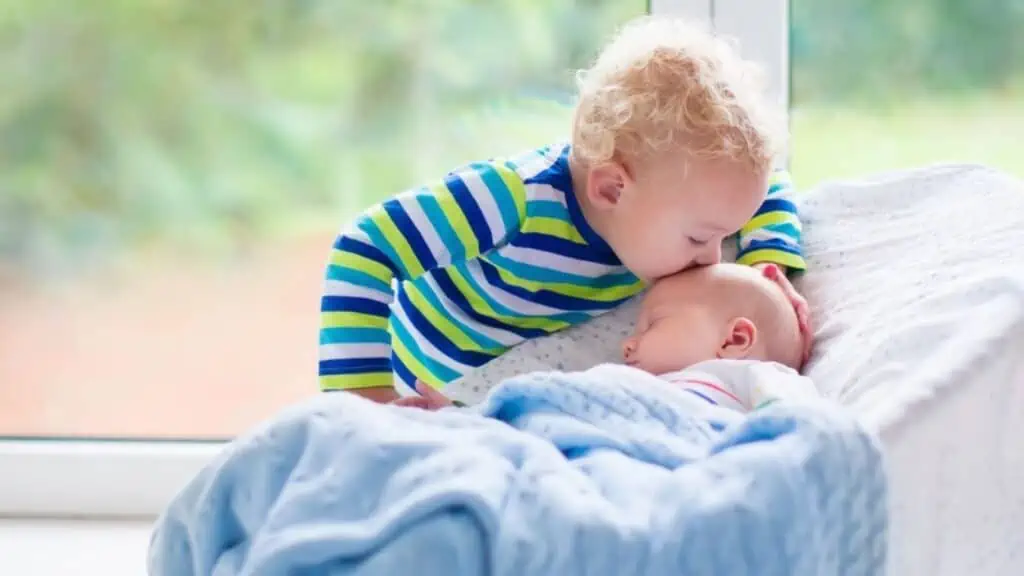
Instead, offer your child choices and give them space to communicate their likes and preferences. Be careful of your own value judgments. For example, it might be natural for you to support one sibling’s soccer ambitions because you played goalie in high school. However, sharing the same enthusiasm for your other child’s love of dance or music is crucial.
4. Consider Parenting Classes
Nearly every parent can benefit from a few classes to hone their skills. It becomes even more critical with Irish identical twins, as your patience and time may be in short supply, leading to mistakes.
Fortunately, you won’t have to pay for this resource. You can find free online parenting classes, and your obstetrician may have live ones they can recommend.
5. Treat Your Children as Individuals
Treating Irish twins the same is sometimes tempting, as many people do with identical twins. However, each child is a complete, unique individual.
Therefore, honor the differences between your kids as much as the similarities. Encourage them to pursue passions that interest them, especially younger siblings, who may want to imitate everything their older sister or brother does.
6. Prioritize One-on-One Time
Having two children close in age means spending a lot of time together. However, your kids need to develop a unique bond with you.
Prioritize one-on-one time, having your partner, a friend, or a sitter watch one child while you do something with the other. You could put this on your schedule — perhaps every other weekend, you and your spouse alternate doing a solo activity with each kiddo.
All About Irish Twins
Although the term “Irish twins” derives from derogatory roots, its simplest definition refers to two children born of the same mother within a 12-month period. Having babies this close together might be convenient for some parents. However, it also entails health risks and requires parents to make more financial and lifestyle accommodations.
Learning about Irish twins can help you decide if this is the best way to grow your family. However far apart your children are in age, you’re sure to love them just the same.


